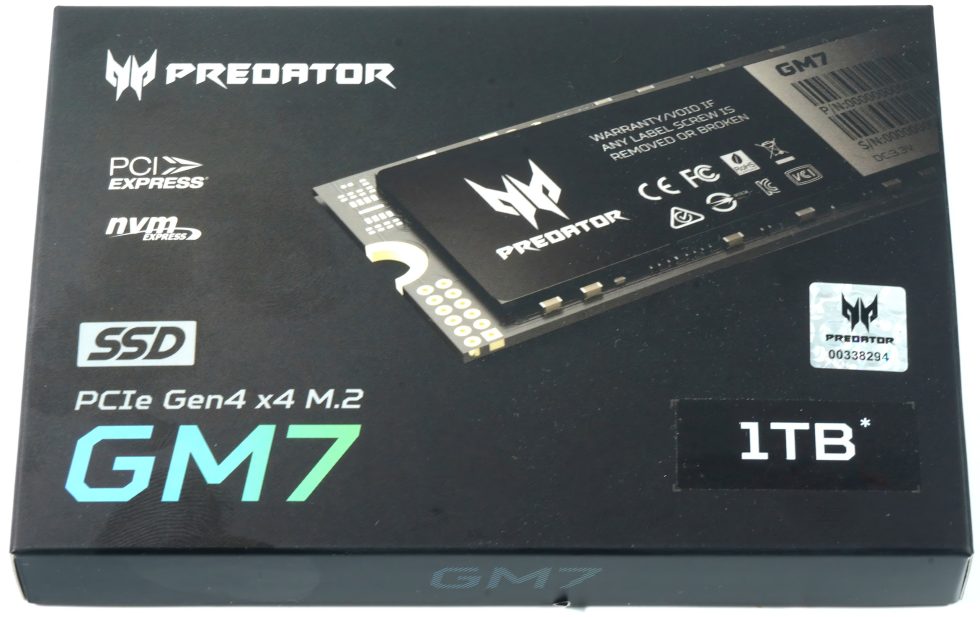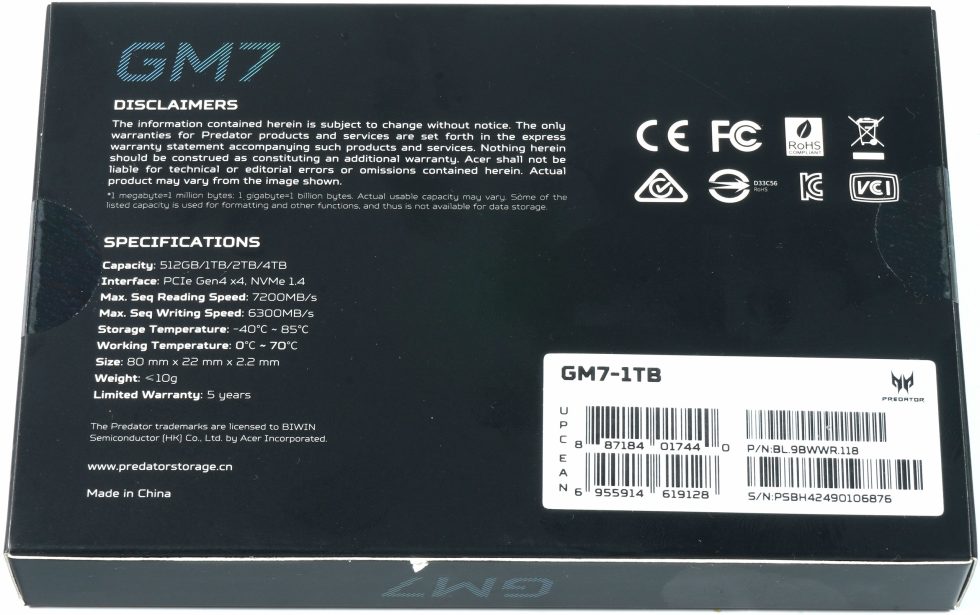The Acer Predator is definitely a highly interesting SSD, because it combines a rather unknown controller (which does without DRAM as cache) with a very special Chinese 3D TLC NAND from YMTC. In this form, it is even (on paper) one of the fastest PCIe-4 SSDs without DRAM cache and probably the most efficient SSD in this segment at all. Even if it is not yet on the market in this country, I will of course not miss such a piece. That would be criminal. Acer’s SSDs are manufactured by Biwin, a company that also takes licenses from HP, among others. But I will come to the components in a moment.
Unlike some U.S. colleagues, I’m not going to spout off about protectionism (eager U.S. lobbyists) and various artificial barriers right now, because there’s definitely nothing really resilient to report yet – even in terms of potential import restrictions. Because they don’t exist in this form. This is about finished products that third parties install quite successfully and the result once again shows quite clearly that it does not always have to be the Micron-Phison alliance when it comes to interesting SSDs. So it’s better not to get confused, this is all much more relaxed than it was boiled up again by a few. And it is precisely the rarity factor that makes such a test so appealing.
The Acer Predator GM7 1 TB comes in a short, 8 cm long M.2 form factor with PCIe 4.0 x4 as the interface and transfers data at least with up to (very theoretical) 7,400 MB/s when reading and 6,300 MB/s when writing. Only will this be achieved and really needed in practice? We already had a larger test recently, which clearly negated this. So let’s be surprised! Like almost all other manufacturers, this SSD uses a “dynamic pSLC cache”, which I would like to and have to say a few words about in the course of the article for a better understanding, but the DRAM is omitted.
Unboxing, accessories and assembly
The manufacturer packages the naked SSD without a cooling block, which is a sustainable idea in times of motherboards with integrated M.2 coolers and a significantly increased efficiency. In the end, you don’t even need an extra cooler, but we’ll see about that. Thus, it is more a question of taste and technical necessities whether you cool the SSD at all. Both are feasible, but not absolutely necessary.
The SSD has a blank backside on the PCB, which comes from Huizhou China Eagle Electronic Technology Co Ltd. The rest is as unspectacular as it gets on the back. However, this also improves the cooling capability from behind, if you need it at all.
For a better overview, I now have the data sheet of the tested variant for you before I uncover the SSD on the following page and analyze the technology including the dynamic pSLC:
| Controller: | Maxio MAP1602A, 4 NAND channels |
| DRAM cache: | not applicable |
| Storage capacity: | 500 / 1,000 / 2,000 GB |
| Memory chips: | YMTC TLC |
| Form factor: | M.2 2280 |
| Interface: | PCIe 4.0 x4 |
| seq. Read: | 7,400 MB/s |
| seq. Writing: |
6,300 MB/s
|
| 4K Random Read: | n/a |
| 4K Random Write: | n/a |
| Functions: | NVMe, NCQ, TRIM, SMART, Garbage Collection |
| Encryption: | n/a |
| Total Bytes Written (TBW): |
600 TBW
|
| Warranty: | 5 years |
| Price: | n/a |
| Price per GB: | n/a |




































13 Antworten
Kommentar
Lade neue Kommentare
Urgestein
Veteran
Urgestein
Urgestein
1
Veteran
Urgestein
Neuling
Mitglied
Urgestein
Mitglied
Urgestein
Urgestein
Alle Kommentare lesen unter igor´sLAB Community →